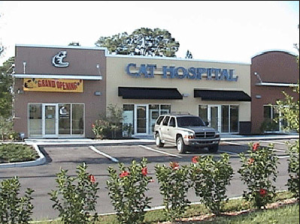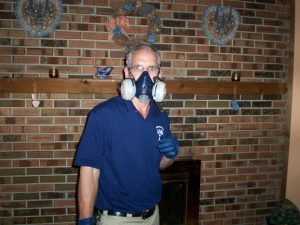 In my little company we use a lot of different products but the growing majority seems to be synthetic pyrethroids. Professional pest control is not alone in this. In fact, if you look under any household sink or on the garage shelf, you’d find synthetic pyrethroids make up the lions share of insecticides used in American households. The list of pyrethroid based products is over 600 and growing all the time. It can be utilized in several different forms as well. Many granules, foggers, concentrates, sprays and aerosols have this man made version of pyrethrins (an “organic” insecticide made mostly from chrysanthemum flowers from Kenya) and for the most part they are considered safer than products in the past (DDT,chlordane & organophosphates in general). But as with ANY pesticide, natural or not, the word “safe” is something that cannot be categorically used since we’ve got that dastardly little word ending, “cide.”
In my little company we use a lot of different products but the growing majority seems to be synthetic pyrethroids. Professional pest control is not alone in this. In fact, if you look under any household sink or on the garage shelf, you’d find synthetic pyrethroids make up the lions share of insecticides used in American households. The list of pyrethroid based products is over 600 and growing all the time. It can be utilized in several different forms as well. Many granules, foggers, concentrates, sprays and aerosols have this man made version of pyrethrins (an “organic” insecticide made mostly from chrysanthemum flowers from Kenya) and for the most part they are considered safer than products in the past (DDT,chlordane & organophosphates in general). But as with ANY pesticide, natural or not, the word “safe” is something that cannot be categorically used since we’ve got that dastardly little word ending, “cide.”
Still, one of the many advantages of synthetic pyrethroids is that it is considered less of a threat to vertebrates because they (vertbrates) have better metabolism, higher body temperatures and different ion channel structures than insects. So while synthetic pyrethroids are quite deadly on a bugs nervous system,,,, on mankind and the like, not so much. Well at least for most vertebrates. Fish and birds can have problems and that list doesn’t include cats either. Apparently cats do not have glucuronidase which serves in hepatic detoxifying metabolism pathways, and just as apparent, that ain’t good. Who knew?
Still, there is one side effect of synthetic pyrethroids that I think affects quite a number of PCO’s and DIYer pest controllers alike. (they’re in the vertebrates category) This condition is called Skin Parasthesia and while not life threatening, it does serve as a good reminder that we’re dealing with substances that don’t always have our best interest in mind, especially if we get careless.
How I Suffered From Pyrethroid Skin Parasthesia
I usually make a chemical run once per month if you don’t count the ‘quick stops’ to pick up items that we suddenly need like a specialty lure or a broken part to a sprayer etc. I try to get things in advance and buy by the case or in bulk where I can so I always have a ready supply. So this means I also do the inventory of our products, stocking shelves, cleaning etc. etc. (so great to be the boss)
Now we use a lot of granules in our pest control treatments. Almost every home or business gets a barrier placed with each regular visit. The granules we use, (synthetic pyrethroids) come from the distributor in 25 pound bags. How we place the granules in our service is we use shakers that hold only a few pounds. So we need to refill quite often. So rather than trying to fill these shakers straight from the bags which is clumsy and wasteful. I decided to label a barrel so I could pour several bags in and just use a scooper. So much easier and far less mess and waste.
The bad part is, this is when I am afflicted with pyrethroid parasthesia. You see to pour the bags I have to sort of bend over the top of the barrel as the contents go in. Although I try to be slow and methodical, a synthetic pyrethroid dust cloud billows out of the barrel & I am exposed. Within minutes I begin to feel the effects & for the next few hours I have a burning reminder that I need to be more careful.
They say that synthetic parasthesia is a paralyzing of sorts (just to the nerves) to a localized area and that this causes tingling and a burning sensation that can last as long as 48 hours. There can be different degrees of severity but it’s generally not thought to be life threatening or cause long term problems. For me, it’s only around my mouth and nose and no where else. The tingling doesn’t hurt per se, but it’s annoying and usually intensifies if I rinse with water. Luckily for me, it only seems to last a few hours.
We Still Need To Think Safety
It’s odd but I never even get an inkling of parasthesia when I apply the granules or use any other synthetic pyrethroid in any form, even if I do get some on some open skin. I’m pretty sure it’s the “dust” that gets me but who knows. Even if it is in smaller doses during the course of the day and I don’t feel it– I am still at risk of exposure. Just because it’s not a dust cloud doesn’t make it safe and besides, if I do 15 houses in a day that’s 15 times i’ve put myself in that situation. Does that equal one barrel episode? I don’t know to be truthful, but I really don’t care to find out using my body or my clients as the test dummy.
I guess sometimes I am actually lulled into a false sense of security and I feel I can actually let my guard down when it comes to safety.

Mama Didn’t Raise No Fool
Cause you know, I don’t feel anything, I don’t spray into the wind, I know how to handle this stuff and hey I do this everyday & look!!!! I’m just fine!!! So maybe I can get away without my gloves, maybe I don’t really need that mask, besides I’m in a hurry and I’ve got 7 more stops to make.
Just being honest & I think it happens to more people than want to admit it. Speaking of HURRY, I’ve gotta head on out to the shop– got some stocking to do!




